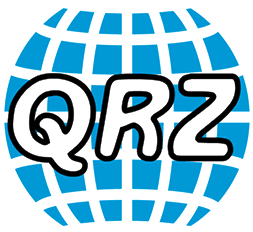While not really "Ham Radio" there is a lot of interest from those interested in exploring the sky and those curious what signals they can pick out of the sky when it comes to FTA Satellite Television, also known as Free To Air. Although "Free" is only partially true. There is, in fact, some encrypted (paid) programming on some of the birds (satellites) out there. Those looking to watch the free programming will not be disappointed, as there is a lot out there.
As of me writing this, this programming would be mainly on Galaxy 19 KU band satellite at 97W, meaning it is at 97 degrees on the West (Covering The Americas) vs East (covering EU, Asia and Africa). This Satellite has a lot of international TV and even radio channels. Many in English, but you will also find Arabic, Persian (Farsi), Tagalog, Vietnamese, Polish and Hungarian to name a few. As of 2018, there is more and more HD programming as well. Below is an actual screen capture of Duna TV from Hungary, as you can see clear digital picture.

You can find all the info one can dream of at a website Lyngsat, starting with channel lineups, satellite locations. languages they broadcast in and much, much more. They even have information on upcoming satellite launches as well as satellite radio and wild feeds. Video is categorized into HD and standard (there is still a lot out there as of 2020) and also in the clear and scrambled, meaning subscription is required. But there is a lot out there to watch for free!

To point the dish is not as difficult as it seems. dishpointer.com is a good site to start with, enter your address and the satellite of interest. You will need of course a compass and tools to adjust antenna.
The required hardware is fairly straight forward:
You will need a Satellite Dish of course. 3ft or slightly larger will do fine in most of the country, Alaska and Hawaii you may need slightly larger. Generally you can get good results with a dish around 36-48". I have had some limited success with old DirecTV dishes.
An LNB which stands for Low Noise Block Amplifier/downconverter and these come in many flavors. The purpose of these is to take a high frequency input and in addition to amplifying the signal for a long coax cable run, it also moves it down in frequency to a more manageable range. Generally these are under 1GHz or around the Cable TV frequencies, making it cheaper and easier to tune at the receiver level and those who are hams understand that the lower the frequency the lower the cable loss. So it is a logical thing to be using.
These will generally operate around 11-13GHz range for the KU Bans, the C band is on much lower frequencies, around 3GHz and requires a much larger dish. I will not cover these here at this time due to decreased popularity and much larger dish requirements...I am talking starting 8ft for good results. Although if there is interest, please get in touch and I will add a section.
For LNBs for FTA Satellite use there are 3 main types:
- Standard Linear - This is the one you likely need, It receives Linear mode as in Vertical and Horizontal vs. circular (below) and works in the 11-12GHz range.
- Universal Linear - Basically an extended frequency range version (goes slightly lower) of the Standard. Not very often used, in fact in North America there is only one Satellite as of 2021 that uses it.
- Circular Polarized - These are the ones you would find with DirecTV and DishNet and is useless for FTA reception as these are used for subscription television services. Nothing at the moment available for FTA use with these.
Gain and noise level of the amplifier (LNB) is what is makes the most difference in both cost and performance. The lower the noise, the generally better.
Polarity is switched with DC voltage 13/18Vdc for Horizontal/Vertical H/V or Circular polarized Right hand and Left hand polarized.
An FTA Receiver, not to be confused with those by DirecTV or DishNet. These are ones designed for receiving non packaged programming. A quick search on ebay will give you a good idea of what is available.
There are are Switches for those looking to receive multiple satellites and/or use multiple receivers on a single receiver. These are basically sometimes available in the LNB itself and are referred to Dual or Quad. They are/or can be switched with 22Khz signal. DiSEqC switch is also used often to combine many receivers and/or to use multiple LNBs and even multiple dishes to receive programming from Multiple satellites. Much as you see DirecTV for example having many LNBs on their oval dishes to allow seamless reception of programming. This is exactly the same concept!
Once you got the above purchased, the rest is installation. You can use the links below to figure out where you want to point. You will need to get either an App with a compass or an old school compass as well as a way to figure out elevation angle. Sometimes there are markings on the dish for this and this is likely enough, the rest can be fine tuned.
I hope you found this very basic into helpful. If you want to see more or something more specific, drop me a line!
Links for additional research:
Lyngsat.org - A list of all satellites, programming and much more
Dishpointer.com - Lookup which direction to point your dish
If you find something incorrect, have an update, or if there is something you would like to see added to the site, drop me a line here. I like to keep things as up-to-date and as accurate as possible. Thank you! - Lucas / W6AER





